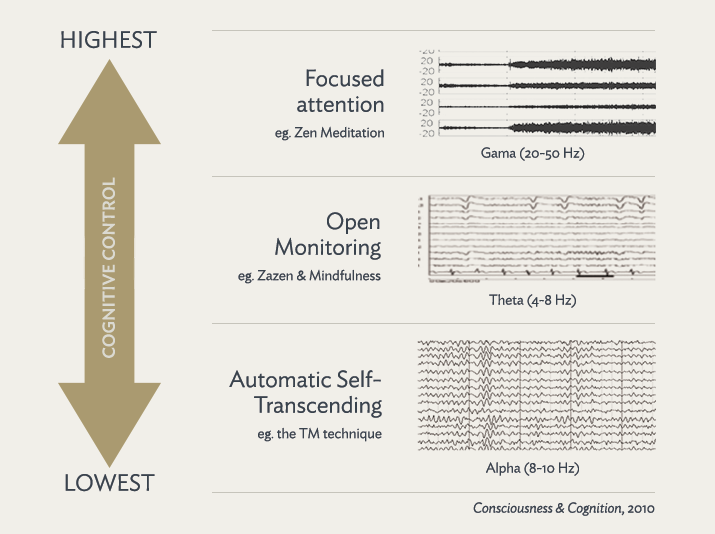HOW IS TRANSCENDENTAL MEDITATION DIFFERENT
TM differs from other techniques in four important ways:
1. Effortless
TM involves no concentration, contemplation or control of your mind – unlike other techniques. It is effortless and enjoyable, and can be practised sitting comfortably in a chair with the eyes closed.
2. Evidence-based
Over 350 published research studies on the TM technique have documented a wide range of unique wellness benefits, including markedly reduced stress and anxiety, and improved heart health and cognitive function.
3. Standardised for effectiveness
Transcendental Meditation is taught through a standardised course by certified teachers to ensure proper instruction and maximum benefits.
4. High Alpha Coherence
Researchers have determined that different meditation techniques affect brain functioning in different ways. Transcendental Meditation develops global alpha coherence, a pattern associated with increased alertness. The development of this coherence is especially marked in the prefrontal cortex – the brain’s executive planning center – and demonstrates the growth in executive functions that occurs through practice of the technique.

Predominant brain activity during 3 different forms of meditation
What this means
As doctors increasingly prescribe meditation techniques to patients for stress-related disorders, scientists are gaining a better understanding of how different techniques from a wide variety of traditions, both modern and ancient, produce different results. A paper published in Consciousness and Cognition discusses three categories to organise and better understand meditation:
- Focused attention—concentrating on an object, idea, or emotion;
- Open monitoring—being mindful of one’s breath, thoughts or feelings;
- Automatic self-transcending—meditations that transcend their own activity
Each of these categories was assigned EEG bands, based on reported brain patterns during mental tasks, and meditations were categorised based on their reported EEG.